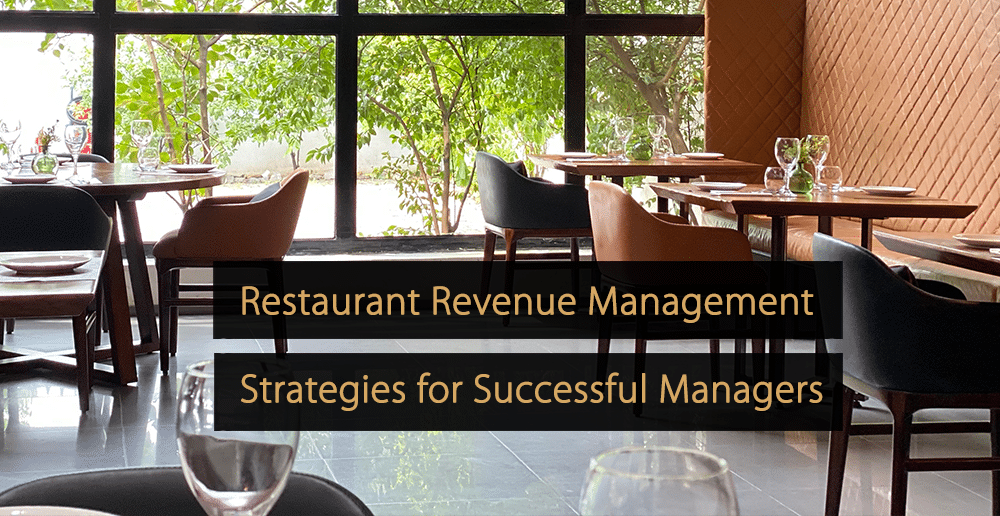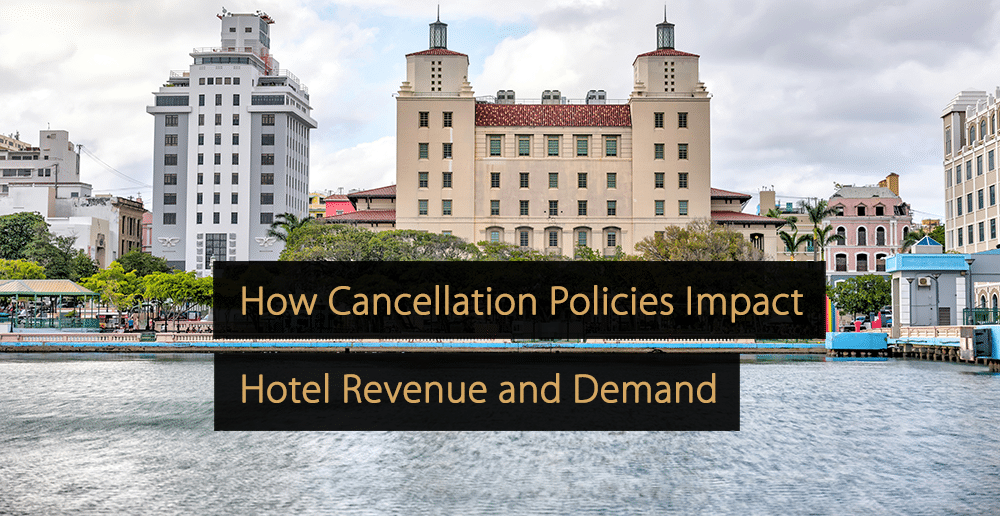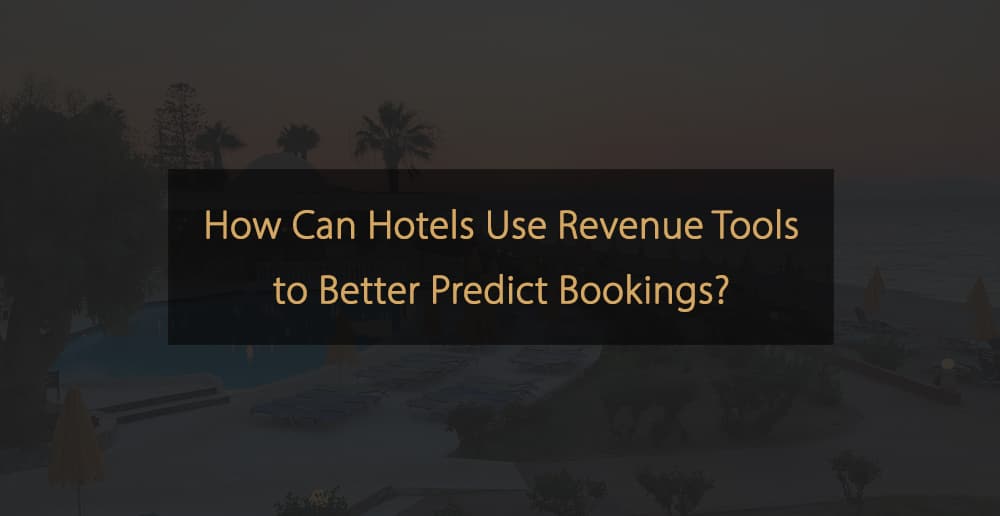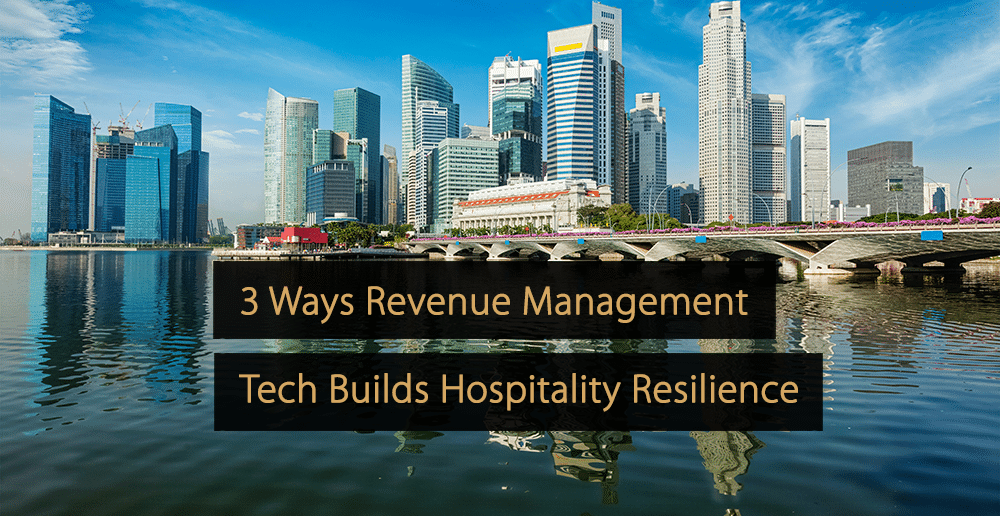Getting your restaurant revenue management strategy right can be critical for your business’s success. In this article, you’ll learn everything you need to know about revenue management: what it is, what it can do for your business, and how to craft and implement the perfect strategy. You’ll also discover key tactics and ways to apply them to your restaurant.
Table of Contents:
- What Is the Restaurant Industry?
- What Is Revenue Management?
- Why Is Restaurant Revenue Management Important?
- Revenue Management System (RMS)
- 8 Popular Restaurant Revenue Management Strategies in 2026
- Choosing a Target Market for Your Restaurant for Optimized Restaurant Revenue Management
- 3 Tips for Successful Restaurant Revenue Management
- Restaurant Marketing Strategies
- Point-of-Sale (POS) Systems for Restaurants
What Is the Restaurant Industry?
Before tackling restaurant revenue management, discussing the restaurant industry is a good idea. The restaurant industry forms a large subset of the hospitality industry. While many businesses in the hospitality field may provide food and beverages for guests, the restaurant industry is made up of those businesses that are primarily concerned with serving food.
In this context, a restaurant is defined as any business chiefly focused on serving food for consumption on the premises. This includes everything from small cafés and snack bars to the most lavish luxury dining establishments. The restaurant industry is one of the largest industries worldwide, generating enormous amounts of economic activity and providing employment in many diverse roles.
If you’re curious to know more about the restaurant industry before reading on, take a look at “Restaurant Industry: Overview, Types, Examples and More“ for an in-depth discussion of the industry.
What Is Revenue Management?
Revenue management is important for success in the restaurant industry. It is a set of tactics and strategies to optimize spending and income. The restaurant industry is highly competitive, especially during times of economic upheaval. More importantly, it’s an industry with high overheads dealing with perishable inventory.
This makes revenue management especially relevant. Using revenue management strategies will help you fine-tune your purchasing and set your prices optimally. Understanding revenue management can be difficult; it’s a complex topic with many factors. If you want to gain a deeper understanding of revenue management, read “Revenue Management: clearly explained!“ right now.
Why Is Restaurant Revenue Management Important?
Restaurant revenue management is vital to running a successful restaurant business. Revenue management is perhaps more important for restaurants than elsewhere in the hospitality industry. While hotels and transportation companies can rely on schedules and a specific duration of service, restaurants must contend with varying numbers and service durations.
Some guests may only spend an hour or so over their meals, while others may linger for two or three. Restaurants can also vary their capacity in a way a hotel cannot. Tables and chairs can be added or removed, depending on whether space or seating is the priority. Pricing can also vary dramatically from season to season and throughout the day.
Revenue Management System (RMS)
Restaurant industry revenue management is a hugely complicated endeavor. Fortunately, restaurant technology provides the answer. Revenue management systems (RMS) are software solutions that automate multiple aspects of revenue management, making life easier for a busy restaurant owner or manager.
There are many systems on the market, each with features and functions. Restaurants and other businesses in the hospitality industry can benefit significantly from adopting these systems. Selecting the right system for a specific business can be challenging, especially if you haven’t used RMS software before.
To help you understand RMS and choose the right solution for your business, read “Revenue Management System (RMS): What Are the Advantages?“ This is a detailed explanation of RMS technology and how it can benefit your restaurant. You’ll discover the key features of an RMS and what to look for in a solution.
8 Popular Restaurant Revenue Management Strategies in 2026
In this section, you’ll discover eight key restaurant revenue management strategies you can apply to your business in 2026.
1. Demand Forecasting
Demand forecasting is a key restaurant revenue management strategy. It involves taking data from various sources and analyzing it to predict demand. This helps restaurants in two main ways. Firstly, a broad, big-picture overview of future demand and profit helps to set business goals and develop more realistic and detailed plans.
Secondly, demand forecasting helps with day-to-day operations. By examining the demand for specific dishes and other products, a restaurant can make better decisions regarding ordering inventory.
It also helps inform staffing decisions, such as how many people to hire and how many shifts to arrange. Demand forecasting uses data collected over the restaurant’s operating history and can also factor in data from external sources, such as industry competitors or general economic trends.
Video: What is Demand Forecasting?
2. Dynamic Pricing
Most restaurants use dynamic pricing as a revenue management strategy without realizing it. Do you have a happy hour, discounts for children or seniors, or other special rates for certain items or times of day? If you do, you’re already using dynamic pricing.
More sophisticated dynamic pricing might involve real-time price updates. During periods of low demand, it can be helpful to reduce prices or offer discounts on specific items to use up perishable inventory, avoid waste, and encourage custom. Guests attracted by discounts on certain menu items will often buy additional items, like drinks or side dishes.
On the other hand, prices can be increased during peak periods to maximize revenue. This is a common strategy across many industries: time-based, demand-based, or surge pricing. Dynamic pricing is most relevant for businesses that experience fluctuating demand or customer interest.
3. Table Turnover Optimization
Table turnover optimization refers to seating the optimal number of guests during a given period. This can be a tricky restaurant revenue management strategy to implement. You must strike a balance between encouraging turnover and allowing your guests to enjoy their meals without making them feel pressured or rushed.
A good starting point is calculating and maintaining the average turnaround time. Your average table turnover during a specific period is easy to find: simply divide the number of dining parties by the number of tables that you have available.
This will give you an idea of the goals you should be setting. Ensuring that guests are seated and served promptly can help improve your table turnover rates; the expense of having additional staff available to look after patrons can be offset by the additional guests who might be served.
4. Menu Engineering
Another strategy that you probably already employ is menu engineering. You already set your menu prices based on sales data, current market rates, and the cost of ingredients. You can refine this strategy further by clearly showing the costs and profits associated with each item on your menu.
Consider the item’s popularity, the cost per serving for the ingredients and preparation, and its profitability. Sometimes, removing an underperforming dish from your menu or finding a way to prepare it more cheaply may be necessary.
On the other hand, items that perform well in sales while also delivering a high profit margin can be highlighted and prioritized on your menu. Pricing can be adjusted, and your most popular and profitable items can be given top billing on menus and restaurant advertising.
Video: How to Price Restaurant Menu Items
5. Competitive Pricing Intelligence
Competitive pricing intelligence is a restaurant revenue management process in which you collect, analyze, and continually monitor rivals’ pricing strategies. The data can then be used to adjust your own pricing. Adopting a competitive pricing strategy can be important for anchoring your strategy to wider market realities. It also allows you to identify and respond to changes in approach from your competitors.
By monitoring the prices set by restaurants in your competitive set, you can learn from what happens to demand from guests and consider whether to make a similar change. Competitive pricing intelligence can also help you to understand your position in the market and learn which special offers or promotions appeal to customers.
6. Restaurant Capacity Management
Restaurant capacity management is the practice of balancing demand, seating arrangements, and guest turnover in order to maximize financial outcomes. This means making effective use of physical space, time, and your workforce. Capacity management is important for optimizing the number of diners you are able to cater to. Ultimately, this allows you to serve more meals and enhance your restaurant revenue management strategy.
When managing the capacity of your restaurant, you need to find the sweet spot for maximizing customers while still meeting guest expectations and maintaining service standards. It is also important to avoid overworking your restaurant staff. Therefore, capacity management strategies require continuous monitoring and smart adjustments.
7. Use of Hospitality Technology
Restaurant revenue management relies on the use of relevant hospitality technology. Examples include customer relationship management (CRM) software, inventory management software, and revenue management software. Technology is important for restaurant revenue management, helping to automate processes and keep relevant data organized. Technology can boost efficiency and enable you to make timely adjustments to pricing, based on demand.
The best revenue management strategies use integrated software and technology, allowing data to be shared. This improves accuracy, reduces data duplication, and makes it easier for employees to find information. For example, point-of-sale systems can be integrated with revenue management software, ensuring sales data is kept up-to-date. This then makes it easier to understand changing levels in demand, so pricing can be adjusted.
8. Optimizing Restaurant Reservation Systems
Reservation systems can be optimized to improve your restaurant revenue management outcomes. This is achieved by making the reservation system easy to use and having systems in place to manage guests who fail to turn up. Optimizing reservation systems is important because reducing unnecessary friction can result in more table reservations. At the same time, you want to minimize no-shows, as this results in unused restaurant capacity and lost revenue.
Your reservation system should be mobile-optimized, so bookings can be easily made on a smartphone. You could implement deposits, which can help to protect your restaurant against last-minute cancellations or non-appearances. The best reservations software will also provide tools for tracking demand, so you can identify booking patterns.
Choosing a Target Market for Your Restaurant for Optimized Restaurant Revenue Management
A foundational step in implementing restaurant revenue management successfully is identifying your target market. If you’re opening a new restaurant, consider where your establishment will be located, your likely customer base, and the hours of operation you plan to keep.
A local diner will have a different customer base than an upscale fine dining business, with a different set of customers to a small bakery and tea shop. If you’re already running a restaurant, you probably have plenty of information you can draw on to identify your current customer base. However, you still need to consider how you’ll draw in new customers.
You need to consider the demographics you’ll be serving: what they need and expect from your business, how much disposable income they have, and how far they’re likely to travel to get to you. This will help you to set prices and select menu items.
3 Tips for Successful Restaurant Revenue Management in 2026
This section will teach you three of the most important tips for implementing a successful restaurant revenue management strategy in 2026.
1. Regularly Change Menus
Changing up your menus regularly is a must for effective restaurant revenue management. Testing and rotating your menus will keep things fresh and interesting for your customers and allow you to identify the items that will be most successful.
To do this, you will need to use data from your restaurant’s POS (point of sale) systems. These systems will tell you what items have been performing well and which can safely be substituted for new options without disappointing customers. Rotating your menus makes it easier to offer seasonal dishes without employing too much guesswork.
2. Implement Inventory Tracking
Inventory tracking can be a major headache for restaurateurs. When dealing with perishable items, you don’t want to buy too much. However, you also need a sufficient quantity of key ingredients so that you don’t run out during periods of high demand.
This is a difficult balancing act to strike. A good restaurant revenue management system with inventory tracking features can help you stay on top of your inventory so that you don’t run out of important ingredients, highlighting ingredients that should be used up.
3. Learn Customer Management
In the hospitality industry, customer service is ultimately your stock-in-trade. This is especially true for restaurant businesses. Dining out is a leisure activity for most people; they pay for the dining experience as much as the food.
You need to outdo your competitors in terms of food quality but in terms of customer service, atmosphere, and overall value. The key metric here will be the feedback you get from your customers. You can reward your customers with loyalty schemes and use these to generate feedback on their dining experience.
Image attribution: Chron
Restaurant Marketing Strategies
Every business needs a great marketing strategy, which is doubly true for restaurants. Getting your marketing strategy right can mean the difference between failure and the roaring success you deserve. Even if you’re already succeeding in the tough world of restaurant ownership, you can always build up your business further.
Putting together an effective restaurant marketing strategy is more art than science, but certain key principles will help you on your journey. To discover what makes a great restaurant marketing strategy, digital marketing for restaurants, and more, read “Marketing Strategy for Restaurants: How to Succeed“ today.
Point-of-Sale (POS) Systems for Restaurants
Getting the right POS and using it effectively can have a major impact on the profitability of your business. A POS is an electronic system that processes payments — but it’s so much more besides. Your POS can be an invaluable source of data on sales, revenue, inventory levels, and more. Like any technology, POS systems are evolving all the time.
In “Restaurant POS Systems: The Latest and Future Trends,“ you’ll learn how data from your point-of-sale system can benefit your business and how new trends will affect it and its customers.
Restaurant Revenue Management FAQs
Hopefully, this article has satisfied your curiosity about revenue management for restaurants. You’ve learned about revenue management and why it’s critical for your business, and you’ve also discovered ways to implement revenue management going forward.
More Tips to Grow Your Business
Revfine.com is the leading knowledge platform for the hospitality and travel industry. Professionals use our insights, strategies, and actionable tips to get inspired, optimize revenue, innovate processes, and improve customer experience.Explore expert advice on management, marketing, revenue management, operations, software, and technology in our dedicated Hotel, Hospitality, and Travel & Tourism categories.
This article is written by:
Hi, I am Martijn Barten, founder of Revfine.com. With 20 years of experience in the hospitality industry, I specialize in optimizing revenue by combining revenue management with marketing strategies. I have successfully developed, implemented, and managed revenue management and marketing strategies for individual properties and multi-property portfolios.










Leave A Comment